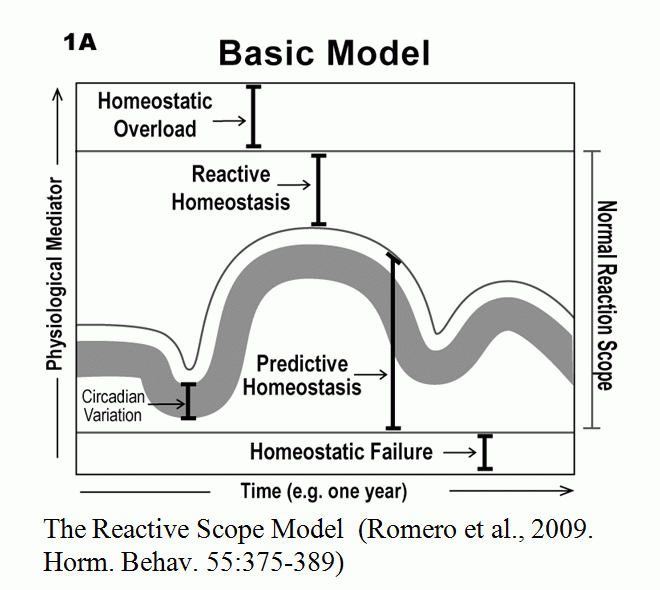The Reactive Scope Model
We have recently proposed a new model to understand and interpret how an animal responds to stress. This model presumes that hormonal, behavioral, and physiological mediators exist in four ranges. The Homeostatic Failure range is too low to sustain homeostasis and the animal would soon die if its mediators were in this range. Above this range is Predictive Homeostasis, where the mediators vary daily and yearly, but always in response to highly predictable changes in their environment (such as day/night and seasonal differences). However, if an unpredictable change occurs, the mediator must increase into the Reactive Homeostasis range. This is the classic stress response where the mediator helps the animal survive the unpredictable change. Together, the Predictive and Reactive Homeostasis ranges form the normal reactive scope of the animal. Finally, if the mediator extends above the Reactive Homeostasis range, then the mediator enters Homeostatic Overload and the symptoms of chronic stress start to occur.
We are currently using this model both to interpret our results from our experiments, as well as to predict what results were are likely to get. Testing the fundamental assumptions of this model is a major goal of our research.
